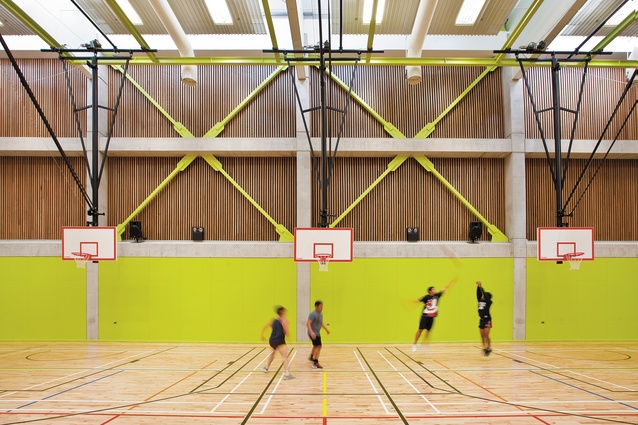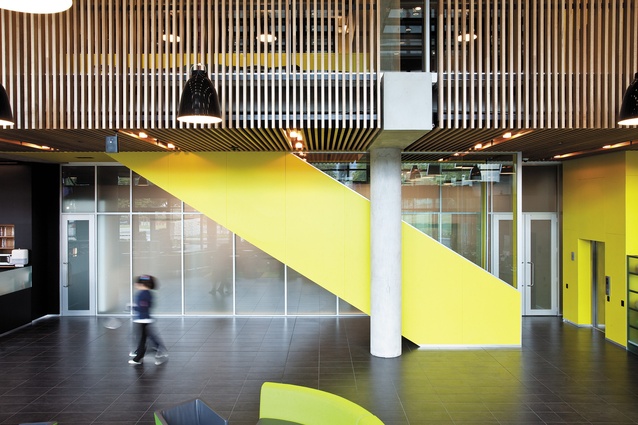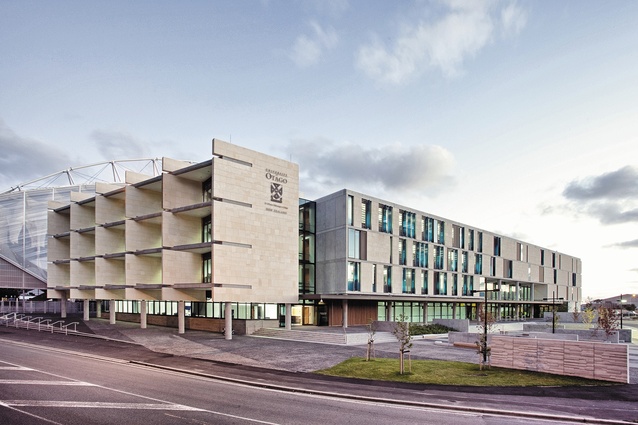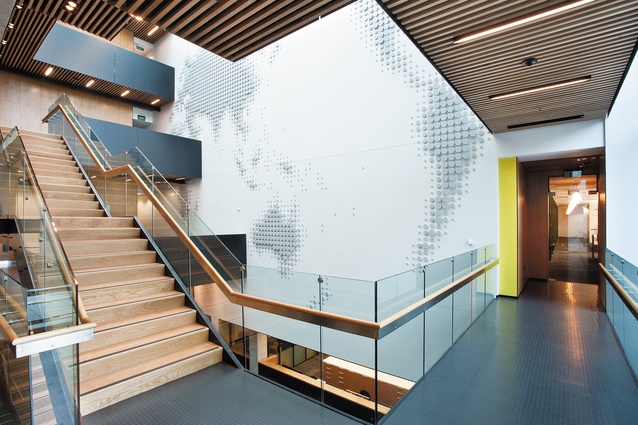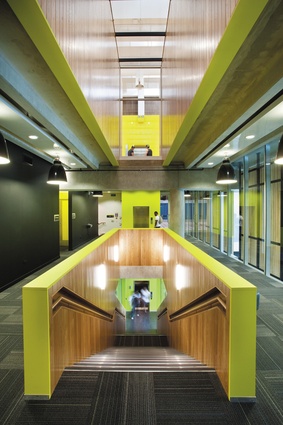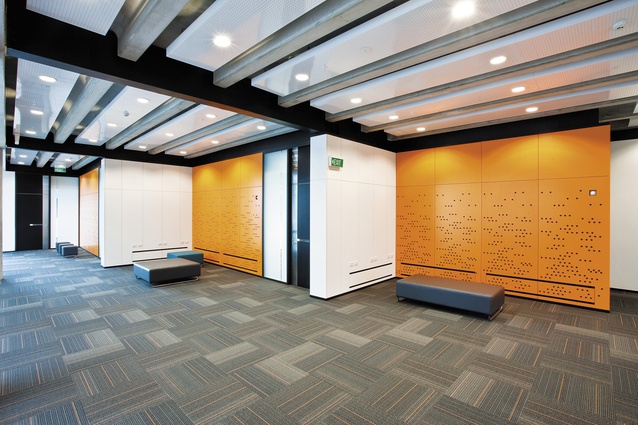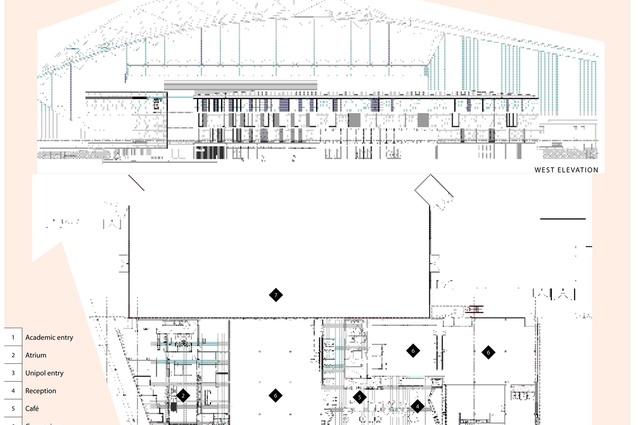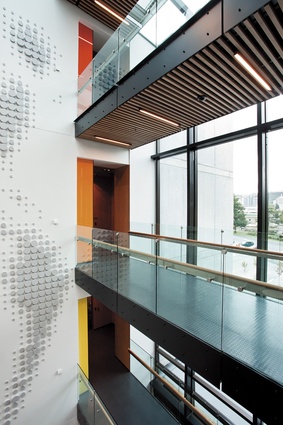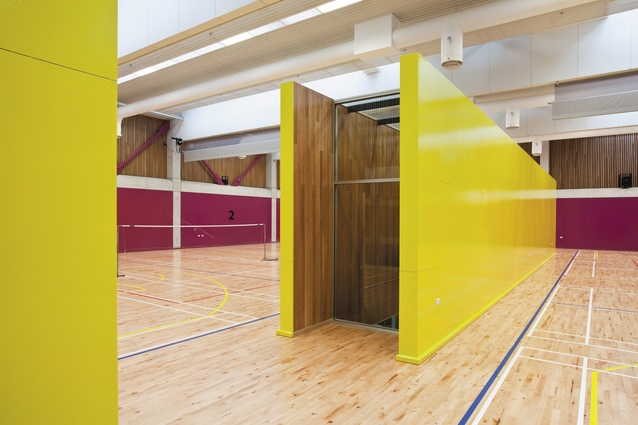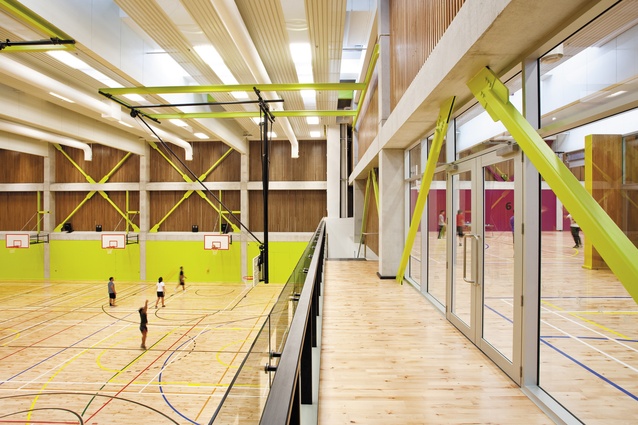University Plaza
It’s a little bit Odd Couple in style – a civil union between sport and academia – but two seemingly disparate groups are comfortably sharing a new home at the University of Otago. Surely the twain have met, in the east nonetheless; scratch the surface and you’ll perceive a logic to this pre-arranged marriage and, at the hands of the architect, a deft manipulation of the programmatic requirements of each party.
So, who are these would-be suitors? It’s well known that Dunedin, Scottish-flavoured city of the south that it is, is a popular destination for students from our own fair shores. The city’s university also has a number of international students. Some of those international students undertake a preparatory year called Foundation Studies before beginning their first year at university. This group needed a new home. Likewise, Unipol, a partially student-owned entity that promotes and provides opportunities for recreational sport and activity, engagement rather than competition, needed new amenities. It was bursting at the seams of its renovated warehouse-style premises.
One group required classroom-style accommodation, supported by academic services and offices; the other required gymnasium spaces. But these are not mutually exclusive groups. Sport, especially sport of the non-competitive sort, provides opportunities for social engagement, a boon for those recently displaced from their respective homelands.
However, there was a further complication. This new building was to be a satellite, enisled from the mother ship, located out on the eastern periphery of the university’s territory and, as such, there was a requirement for the provision of the necessities of life, or a café, in other words. This happy morass of needs, wants and ‘must-haves’ fell into the hands of Warren and Mahoney. Architect Blair Johnston and his team set about figuring out a logical method of marrying sport and academia within an activity-generating hub.

The design solution for the new building, which shares a wall with the new-ish Forsyth Barr Stadium, was an “interlocking planning diagram with academic spaces wrapping around the recreational spaces,” says the architect. “This allows the façade to be highly articulated with a significant degree of glazing and it permits the building to be predominantly academic in nature, with the office and teaching spaces located in highly visible locations from which the expression of the building is derived.”
The building’s external form is clearly readable as a university building. The selection of Oamaru stone as a primary cladding material and an array of vertical plinths along the Union Street frontage were “overt moves” that hark back to the series of vertical Oamaru stone elements at the main campus. The exterior of this new building, however, “ruthlessly refers to its function inside”, says Johnston. Classroom spaces are at the northern end, where greater depth could be introduced without compromising the predetermined dimensions of the three long-span gymnasiums, cunningly incorporated along the longer north-eastern axis of the building.
Johnston says that if the overarching philosophy of Unipol is participation, then the key design philosophy was about visual connection. The building has two atria with distinct entrances.

